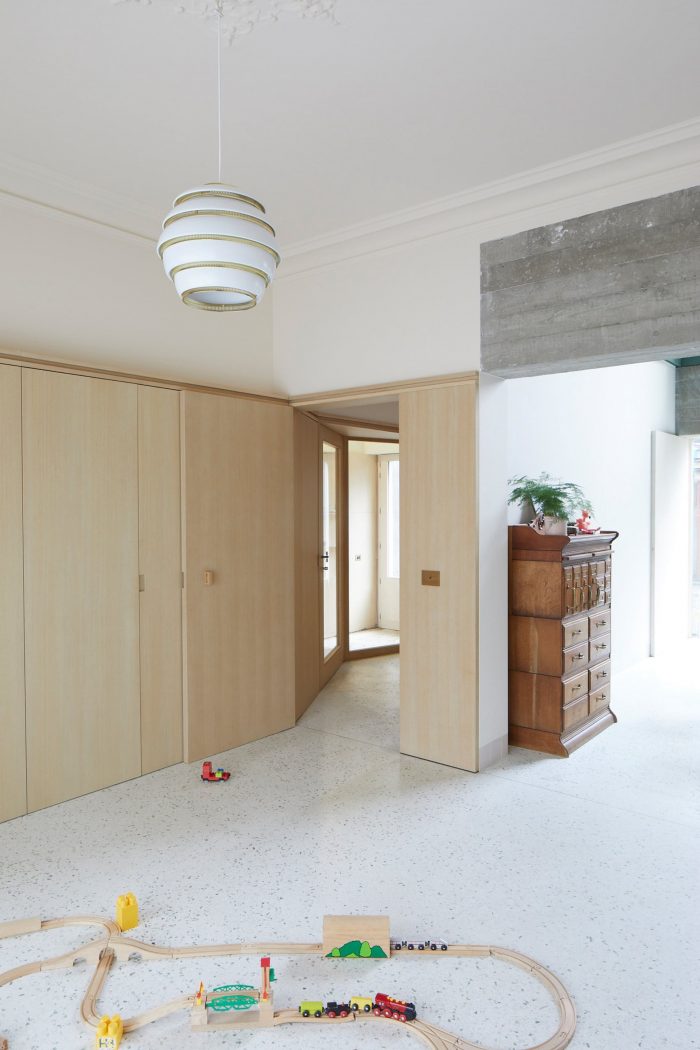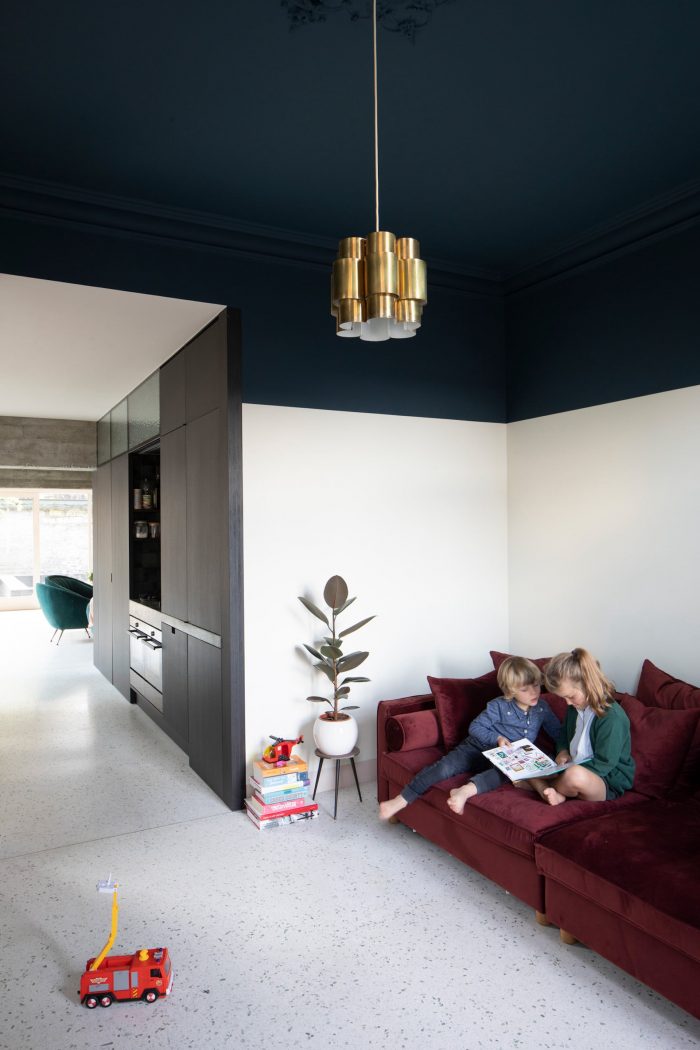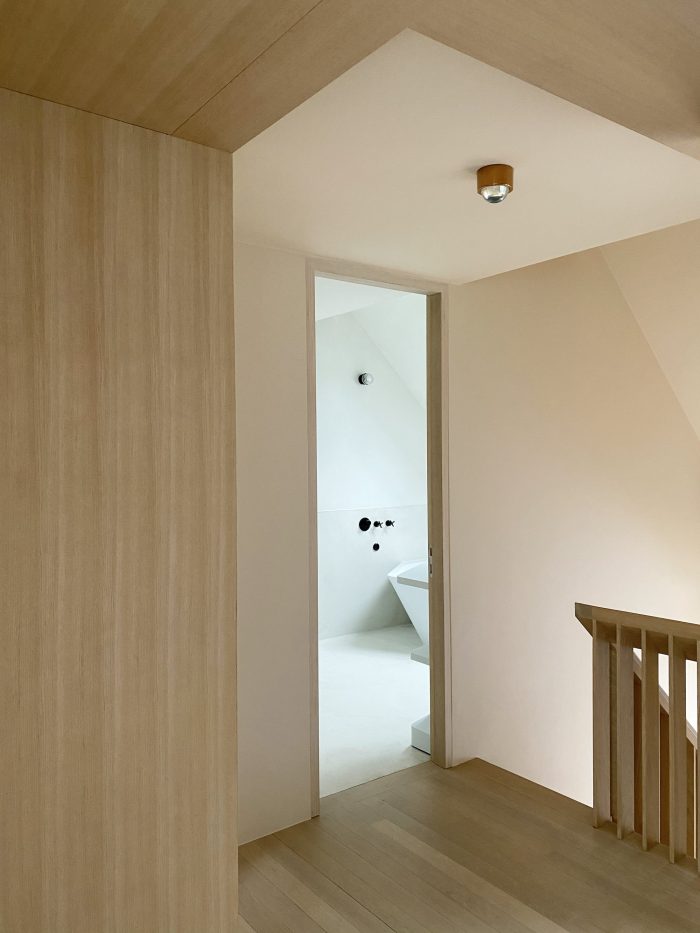JJ之家位于Macharius区,这是根特(比利时)中心的一个区域,该城市的历史层次最为明显,是一座19世纪的梯形房屋,与圣巴沃修道院和前城市屠宰场相邻。
Located in the Macharius quarter, an area in the center of Ghent (Belgium) where the layers of the city’s history are most apparent, JJ House, a 19th-century terraced house, neighbors St Bavo’s Abbey and the former city slaughterhouse.
毗邻的房产范围内有以前的城市马厩,在那里为附近的屠宰场收集牛群。当这处房产被投放市场时;居住者看到了一个难得的机会,可以获得通常只有在郊区才有的空间。该项目的范围是合并这两座房子,提出在Macharius密集的城市结构中进行减压。
The adjacent property contained within its boundaries the former city stable, where the cattle were collected for the nearby slaughterhouse. When this property was placed on the market; the occupants saw a rare opportunity to gain the space usually only available in suburban areas. The scope of the project was to merge the two houses, proposing what would be a decompression in the dense urban fabric of Macharius.
为了将两座房子连接成一个家,我们在粗锯的模板上浇筑了一个混凝土梁的十字形,承担了后立面和隔离墙的负荷。一方面,这使得底层的视觉和物理连接成为可能,另一方面,将开放空间划分为四个象限,作为不同活动空间的集合。连接在一起,但每个象限都有自己明确的氛围。
In order to join the two houses into one home, we cast a cruciform of concrete beams in rough-sawn formwork that carried the load of the rear facade and separating wall. On the one hand, this made possible both the visual and physical connection of the ground floor and on the other hand, divides the open space into quadrants as a collection of spaces for different activities. Connected yet each quadrant with its own clear atmosphere.
就餐区是一个庄重的、涂有绿色油漆的、双高的空间,朝向南方。厨房是一个压缩的空间,用烟熏橡木衬托。起居室是最私密的空间,由一个现成的混凝土桶形拱顶界定,最后是一个户外房间。后者由两扇滑动门与房子隔开,在夏天可以完全打开,这样花园就成为房子的一部分。
The dining area is a solemn, green-painted, double-high space, oriented south. The kitchen is a compressed space, lined in smoked oak. The living area, the most intimate of spaces, is defined by an in-situ concrete barrel vault and finally, an outdoor room. The latter is separated from the house by two sliding doors that can be completely opened in the summer so that the garden becomes a part of the house.
与连接和定义四个空间的策略平行,我们一直在玩弄和重新解释现有的和历史的特征,如马厩和一个原始的壁炉,同时在这些元素之间创造新的关系,以保留和进一步加强该地的特征和记忆。
Parallel to the strategy of connecting and defining the four spaces, we have consistently played with and reinterpreted existing and historical characteristics such as the stables and an original fireplace, whilst creating new relationships between these elements to retain and furthermore enhance the character and memory of the site.
Architects: AE-architecten
Area : 419 m²
Year : 2020
Photographs :Faye Pynaert
Manufacturers : Accoya, Dornbracht, Oluce, Rubio Monocoat, V-Zug, Woka, Beal mortex, CJC, Nemetscheck, Siedl
Lead Architects : Petra Decouttre & Jan Baes
Structural Engineering : H110 architecten en ingenieurs
Carpenter : Demeersman
Electricity : Electro Light
City : Ghent
Country : Belgium






















